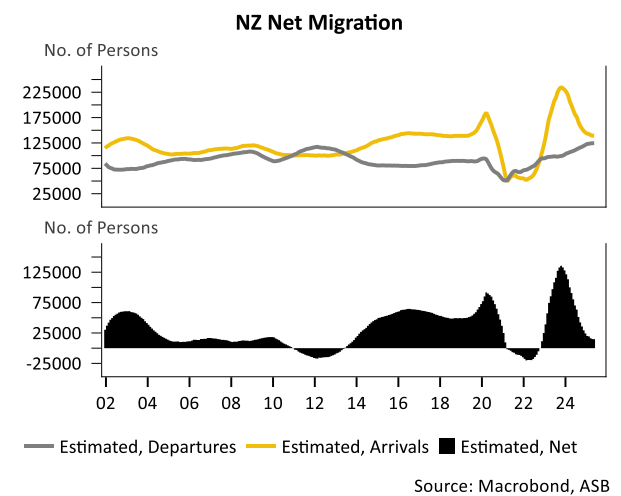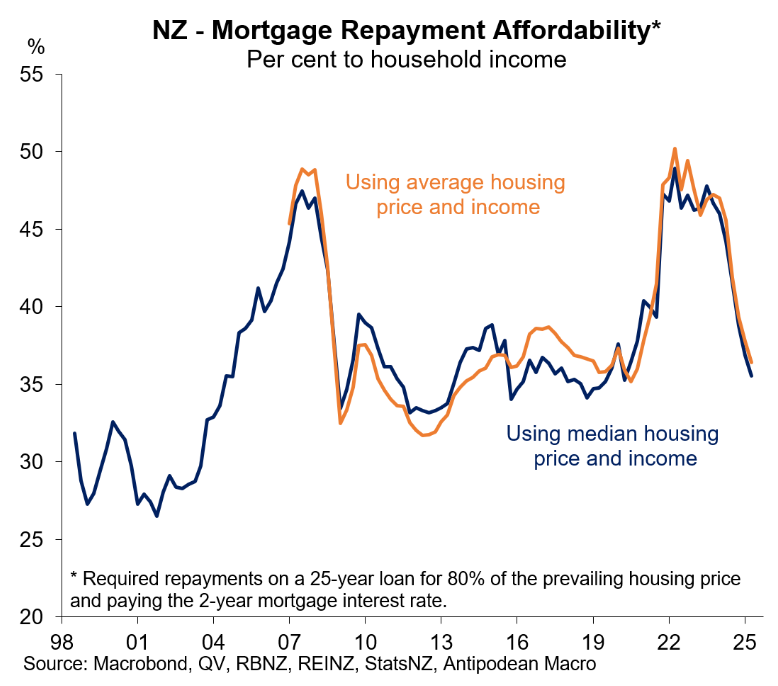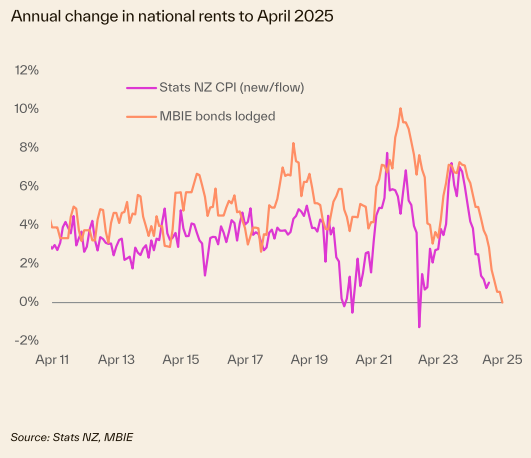Net overseas migration into New Zealand has collapsed to a 2½-year low and is tracking around half the historical average.

The slump in immigration has worked wonders for housing affordability, with home prices and rents declining amid weaker demand.
Real house prices in New Zealand have crashed back to pre-pandemic levels, while mortgage rates have fallen, significantly improving mortgage affordability.

Rental growth has also fallen sharply, as illustrated below by Cotality.

At the same time, slower immigration looks to be a major factor contributing to the sluggish pace of consumer demand and aggregate economic growth.
The latter may explain why the conservative National Government of New Zealand is seeking to pump immigration via various visa categories.
One month ago, the government announced new ‘Parent Boost’ visa, which will allow migrants to bring parents to New Zealand for up to 10 years.
“Ultimately, this visa makes New Zealand a more attractive destination for the talent we need to drive economic growth. A skilled workforce means more productivity, stronger communities, and more prosperity for all New Zealanders”, ACT’s immigration spokesperson Parmjeet Parmar said.
While I am unaware of similar studies in New Zealand, parental visas in Australia cost taxpayers billions of dollars and have been explicitly opposed by the Productivity Commission because of their burden on the federal budget, social services, and infrastructure. These visas also contribute directly to the ageing of the population.
Next, the National government announced a new foreign investor migrant visa, aimed at luring more high-net-worth individuals to the country to stimulate economic growth.
The government in April relaxed rules for the visa, including lowering the minimum required funds for the category that focuses on higher-risk investments to NZ$5 million (US$3 million) from NZ$15 million and removing the English language requirement.
There has reportedly been a rush of applications for the new visas from the US, mainland China, and Hong Kong.
Such ‘Golden Ticket’ visas were long opposed by Australia’s Productivity Commission and were abolished by the Albanese government during its first term because they act as conduits for money laundering, they typically went to older people who did not face an English-language test, they provide net costs to the community, and they crowded out other skilled visas.
Finally, the New Zealand National government has raised the number of permitted hours that international students can work during the academic term from 20 to 25 hours in a week, in a bid to boost enrolments.
The change forms part of New Zealand’s “International Education Going for Growth Plan”, announced by the government on Monday.
The plan aims to increase the annual economic contribution of higher education to NZ$7.2 billion (US$4.3 billion) by raising international student enrollment from 83,700 last year to 119,000 by 2034.
Education Minister Erica Stanford said in a statement that with international student enrolments steadily increasing since 2023, the government wants to “supercharge that growth track”, Reuters reported.
“In the short term, Education New Zealand will focus its promotional efforts on markets with the highest potential for growth”, she added.
This policy will inevitably turn student visas into de facto low-skilled work visas and will likely deliver a boom in non-genuine students from South Asia and Africa.
Clearly, the New Zealand National government is intent on flooding New Zealand with low-quality, low-productivity migrants in a bid to juice headline GDP growth and support the housing market.

